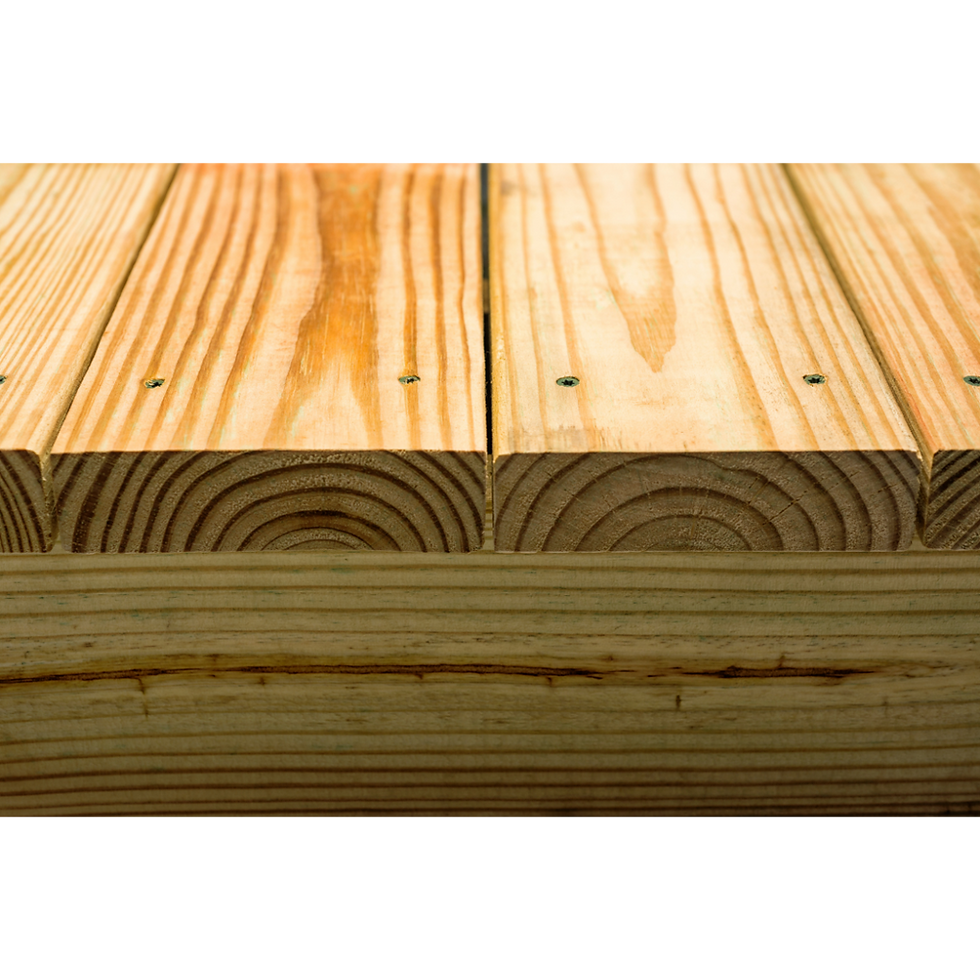Choosing Between Pressure-Treated Wood and Composite Decking
- JCS

- Jul 5, 2024
- 3 min read
Updated: Dec 30, 2024
Hey there! So, you’re diving into the world of deck building and trying to decide between choosing pressure-treated wood and composite decking. Let’s break down the details and see which option suits your needs best.
Pressure-Treated Decking

Cost Basics: Pressure-treated wood is quite economical upfront, with materials costing around $3 to $6 per square foot. When it comes to labor, you’re looking at $15 to $35 per square foot, depending on the complexity of the job and your location.
Design Variables:
Deck Height: Higher decks require more support and a stronger foundation, increasing both material and labor costs. A ground-level deck is cheaper than a multi-level or raised deck.
Layout and Design: Simple rectangular layouts are more affordable. If you opt for a picture frame design, breaker boards, or intricate patterns with different colored boards, expect to see a rise in labor costs because these designs require more precision and time.
Board Size and Type: Wider or longer boards can be more expensive. They can reduce the number of seams and create a cleaner look, but they often cost more per linear foot.
Maintenance: Pressure-treated wood requires regular maintenance. Every couple of years, you’ll need to seal it to protect against moisture and UV damage. Neglecting this upkeep could lead to warping, cracking, or even rot. Typically, these decks last about 10 to 25 years, depending on how well you maintain them.
Composite Decking

Cost Basics: Composite decking is a bit pricier upfront. You’re looking at material costs of $6 to $18 per square foot. Labor costs are higher here, ranging from $20 to $65 per square foot.
Design Variables:
Deck Height: Higher decks need more structural support, similar to pressure-treated decks.
Fascia and Perimeter Boards: Composite decks typically include fascia boards to cover the edges and create a clean finish. These add to material costs. Perimeter boards are often used to frame the deck, which adds to both material and labor costs.
Color and Texture Variations: Composite decking comes in a variety of colors and textures, allowing for creative designs. Different colors or textures can raise costs, especially if you opt for high-end options.
Plugs and Fasteners: Unlike wood, composite decks often require special plugs to cover screws for a seamless look. This not only increases material costs but also requires more labor for installation.
Maintenance: Composite decking is low-maintenance—no need for regular sealing or staining. It’s resistant to rot, warping, and pests, and often comes with a 25-year or more warranty.
Detailed Breakdown for a 16x20 Foot Deck
For a 16x20 foot deck, here's what you can expect:
Pressure-Treated Decking:
Materials: $960 to $1,920
Labor: $4,800 to $11,200
Total: $5,760 to $13,120
Composite Decking:
Materials: $1,920 to $5,760
Labor: $6,400 to $20,800
Total: $8,320 to $26,560
Additional Considerations
Durability: Composite decking is more resistant to weather, pests, and decay, potentially saving money on repairs over time.
Aesthetics: Composite decking offers more design flexibility with color and texture options, whereas pressure-treated wood provides a classic, natural look.
Final Thoughts
Let's choose between pressure-treated wood and composite decking. If you’re looking for an initially budget-friendly option and don’t mind putting in some regular maintenance, pressure-treated wood could be your best bet. It gives you that classic wood look and feel. On the other hand, if you prefer a hassle-free, long-term solution and can handle the higher upfront cost, composite decking is a fantastic choice. It’s durable, looks great, and requires very little upkeep.
So, what’s catching your eye? Let’s make sure your deck is exactly what you’ve been dreaming about!
Schedule a consultation call with us here!




Comments